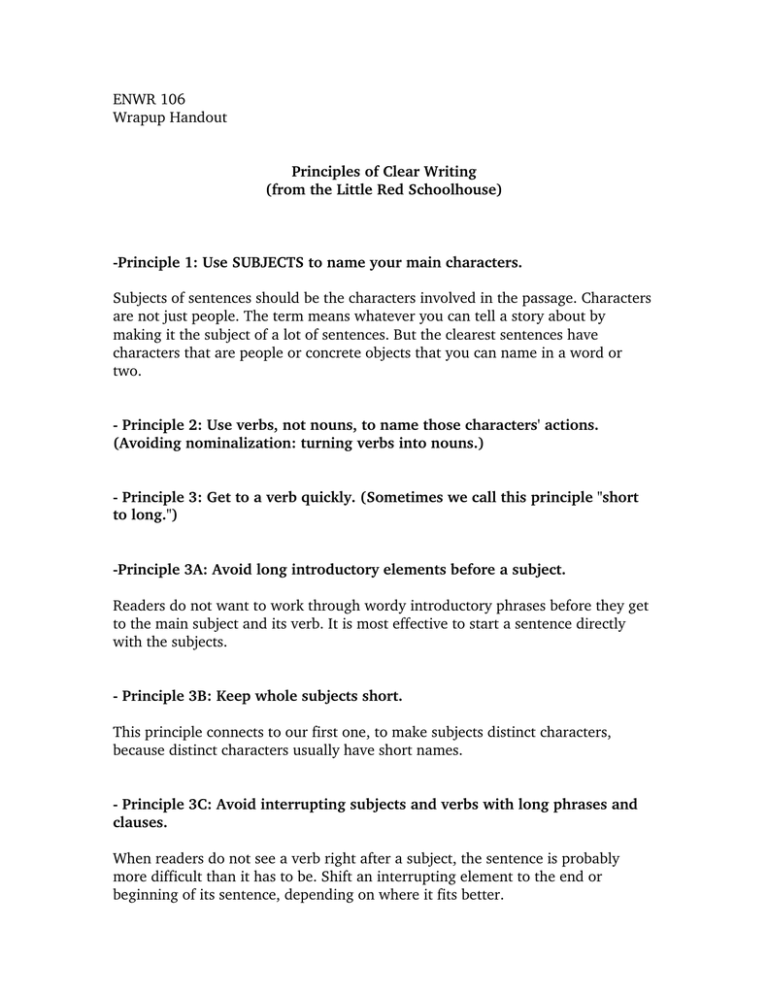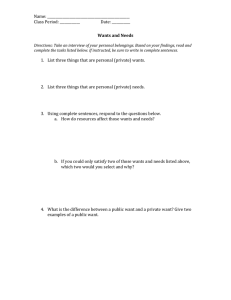ENWR 106 Wrapup Handout Principles of Clear Writing (from the Little Red Schoolhouse)
advertisement

ENWR 106 Wrapup Handout Principles of Clear Writing (from the Little Red Schoolhouse) -Principle 1: Use SUBJECTS to name your main characters. Subjects of sentences should be the characters involved in the passage. Characters are not just people. The term means whatever you can tell a story about by making it the subject of a lot of sentences. But the clearest sentences have characters that are people or concrete objects that you can name in a word or two. - Principle 2: Use verbs, not nouns, to name those characters' actions. (Avoiding nominalization: turning verbs into nouns.) - Principle 3: Get to a verb quickly. (Sometimes we call this principle "short to long.") -Principle 3A: Avoid long introductory elements before a subject. Readers do not want to work through wordy introductory phrases before they get to the main subject and its verb. It is most effective to start a sentence directly with the subjects. - Principle 3B: Keep whole subjects short. This principle connects to our first one, to make subjects distinct characters, because distinct characters usually have short names. - Principle 3C: Avoid interrupting subjects and verbs with long phrases and clauses. When readers do not see a verb right after a subject, the sentence is probably more difficult than it has to be. Shift an interrupting element to the end or beginning of its sentence, depending on where it fits better. -Principle 4: Begin sentences with information that is familiar to readers. (Sometimes we call this principle "old to new.") This principle has the same effect as the first three. It lets readers build up momentum in a sentence, but it depends less on the grammar of the sentence than on the psychology of its reader. We read more easily when we start with simple and familiar information and then build up to new and complex information. Principle 5: End a sentence with long and complex units of information. Information at the end of the sentence makes more of an impact on readers. We call the end of the sentence the "stress" position. - Principle 6: Keep your subjects consistent. Avoid beginning several sentences in a row with unrelated subjects. (We sometimes describe the beginnings of sentences as "topic strings.") When sentences in a series all begin differently, we are likely to judge the passage to be unfocused, disjointed, even disorganized. More consistent subjects make reading easier. Be careful not to vary subjects randomly, but limit them to just a few different characters. Principle 7: Announce the point (the subject and sub-claim) of your paragraph within the first few sentences of a paragraph. (We describe the beginnings of paragraphs as "issues" and the rest as "discussion.")





